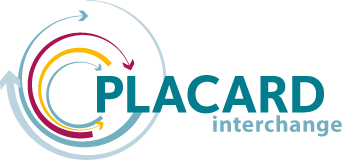A multi-hazard perspective on disaster risk reduction and climate change adaptation for forest landscapes
4–6 October 2017
NET RISK WORK workshop, Solsona, Catalonia (Spain)
With almost 182 million hectares of forest and woodland in Europe (Eurostat 2017) – 43% of the total available land – large investments (3.19 € billion in 2014, Eurostat 2017) and high stakes, as they provide many different types of ecosystem services. In addition, it is clear that forests should be valued and play an essential role in disaster risk reduction and climate change adaptation. The devastating wildfires across Europe in 2017, not only left deep scars in the forests, but also in society as a whole. It’s essential to get the full picture and understanding in order to take short- and long-term actions regarding disaster risk reduction and climate change adaptation.
As part of the EU-project NET RISK WORK (Networking for the European Forest Risk Facility) I took part in the workshop Managing forest risks towards disaster reduction: the case of wildfires, storms, floods and avalanches and their interactions in October 2017 in Solsona (Catalonia, Spain).
Forty five experts from different European countries and regions (Switzerland, Andorra, Germany, France, Lithuania, Bulgaria, UK, the Netherlands, Italy and Catalonia -Spain) worked together to create a common understanding of and shared knowledge and experience in dealing with four major natural risks that affect European forests – storms, forest fires, snow avalanches and floods – and their potential interaction in a climate change context. The workshop also allowed us to link different networks and platforms to increase effectiveness.
I attended on behalf of PLACARD and provided a keynote presentation about the integrated approach of flood risk management and multilayer safety, the relationships between floods and forests, and the importance of both short- and long-term action, but also in the right perspective.
I also introduced PLACARD in order to increase cooperation and knowledge sharing between the different projects and platforms. It also allowed me an opportunity to get a better view on this specific area and to provide insights gained from other areas, especially from the participatory approach and spatial planning perspective.
One thing is certain: forests and their surroundings face complex, interwoven risks and impacts. For example, disturbances in forest cover after wildfires can lead to increased flood risk or avalanches in the following season.
So, where should the focus be? Long-term adaptation measures on wildfire or short-term actions to prepare for floods or avalanches, or a combination of both? And do we have enough information to take action? In the case of wildfire, the key note speaker noted:
We need to share knowledge and insights on what we don’t know – the known unknowns – as well as be prepared for the unexpected – the unknown unknowns.
Complexity and uncertainty are the factors we must deal with, while developing understandable narratives to inform current and future actions.
When assessing multiple risks, it’s important to not only focus on the direct impact on forests, but also on their surroundings and across the ecosystem. The European Union promotes sustainable forest management, improving environmental conditions and, as a result, resilient forest landscapes. But how can we deal with the complex interlinkages between different natural hazards, the impact on forests as well as societal impacts, and, last but not least, how to encourage awareness and action at different levels, from politics to public?
The presentations forests and natural hazards such as flood, fire, avalanches and storm, all clearly demonstrated that often the focus is more on direct response and less on preparation or prevention. In addition, not only is there a distinction between actions in disaster risk reduction and climate change adaptation, but also the hazards are often dealt with separately.
A critical challenge would be to develop clear narratives which show the full perspective and address action targeted to different groups in an appealing way. This would mean bridging long-term vision and short-term no-or low-regret actions through an agile and landscape-based approach. Shifting from a responsive to an adaptive and anticipatory attitude would help to create long-term value and resilience instead of constantly reacting to problems at the end of the process, leading to work on a common multi-risk approach and framework.
A structural change of view and action is needed: it’s very important that the different expert communities, both from disaster risk reduction and climate change adaptation team up, as well as communities from the different types of hazards. Everyone working together in the same landscape and same social ecosystem will allow for the creation of solutions with a sense of place, sense of time and sense of cooperation.
During the workshop we visited two areas, one where landscape-based strategies are put into practice. Planning involved the use of visualisation of future perspectives combined with a clear narrative, but, most importantly, it was put into action.
For both PLACARD and NET RISK WORK, the importance of strategic narratives and governance is well addressed and are acknowledged as key issues in bridging science, policy and practice. Knowledge has to led to awareness, which has led to action. But at present, this is not yet evident. One thing for is for sure, the complex European forest landscapes could be an interesting showcase in preparing strategic narratives. We have a story to tell together!

